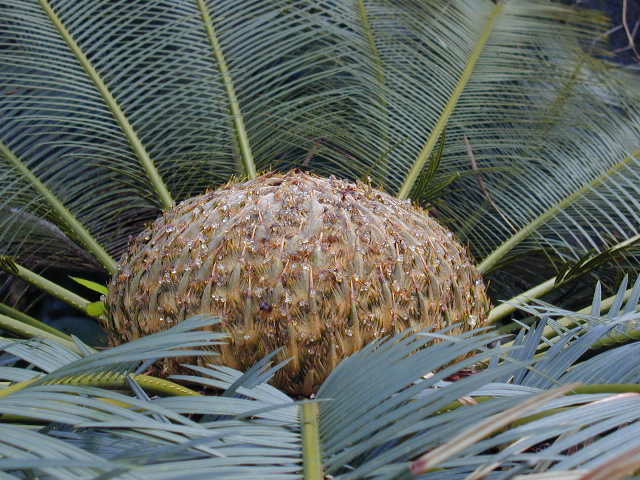|
|
|
| Cycad species vary in leaf physiology and structure |
 |
Text Size: A A A |
|
Cycads are the most ancient living seed plant lineage, considered as living fossils because of the morphological similarity between fossil and extant species. It is not well-known whether cycad leaves show strong variation in physiology, or whether that variation would be constrained by similar principles as in angiosperms. Dr. ZHANG Yongjiang of Xishuangbanna Tropical Botanical Garden (XTBG) and his international colleagues conducted a study to test whether cycad leaves are governed by the same fundamental design principles previously established for ferns, conifers and angiosperms. They also characterized the uniqueness of this relict lineage in foliar trait relationship. They aimed to assess the association of traits (including nutrient composition, leaf structure, stomatal conductance and leaf hydraulics) with photosynthetic rate, based on studies of angiosperms, conifers, ferns and mosses. The research was carried out in the Cycad Garden at XTBG and the National Cycad Germplasm Conservation at Fairylake Botanical Garden. 33 cycad species from nine genera and three families were selected. Based on their native habitats, the species were classified into three classes: native to dry habitats, moist habitats, or both dry and moist habitats. Leaf structure, photosynthesis, hydraulics and nutrient composition were studied. Using linear or nonlinear regression, the researchers analyzed the relationship between functional traits (including leaf thickness and density, gas exchange, nutrient and chlorophyll concentrations, and leaf hydraulic conductance). They also tested the equal variances of the variables and used one-way ANOVAS to test trait differences among cycad genera. The study found that the cycad species varied strongly in leaf gross morphology and shape, as well as in photosynthetic rate, and stomata and hydraulic conductance. Cycad species also varied strongly in nutrient concentrations and leaf mass per area. The leaf economic trait relationships that were hypothesized based on those established for angiosperms were also very strong across the cycad species, and there were stronger trait relationships for mass-based than area-based light-saturated CO2 assimilation rate. The researchers thus concluded that the relationships among cycad leaf functional traits generally agreed with the global economic spectrum (i.e. a strikingly consistent pattern of correlations among leaf traits). High hydraulic conductance and photosynthetic rate, as well as high diversification in leaf structure and function would have facilitated their dominance in a variety of ecosystems. Nutrients other than nitrogen (e.g. phosphorus and iron) explained a significant amount of variation in photosynthetic rate per mass of cycads as well, suggesting the importance of introducing nutrients other than N and P into a higher resolution understanding of the leaf economic spectrum. There was no coordination between leaf hydraulic conductance and photosynthesis among cycads.

Cycad (Image by DUAN Qiwu) |
|

